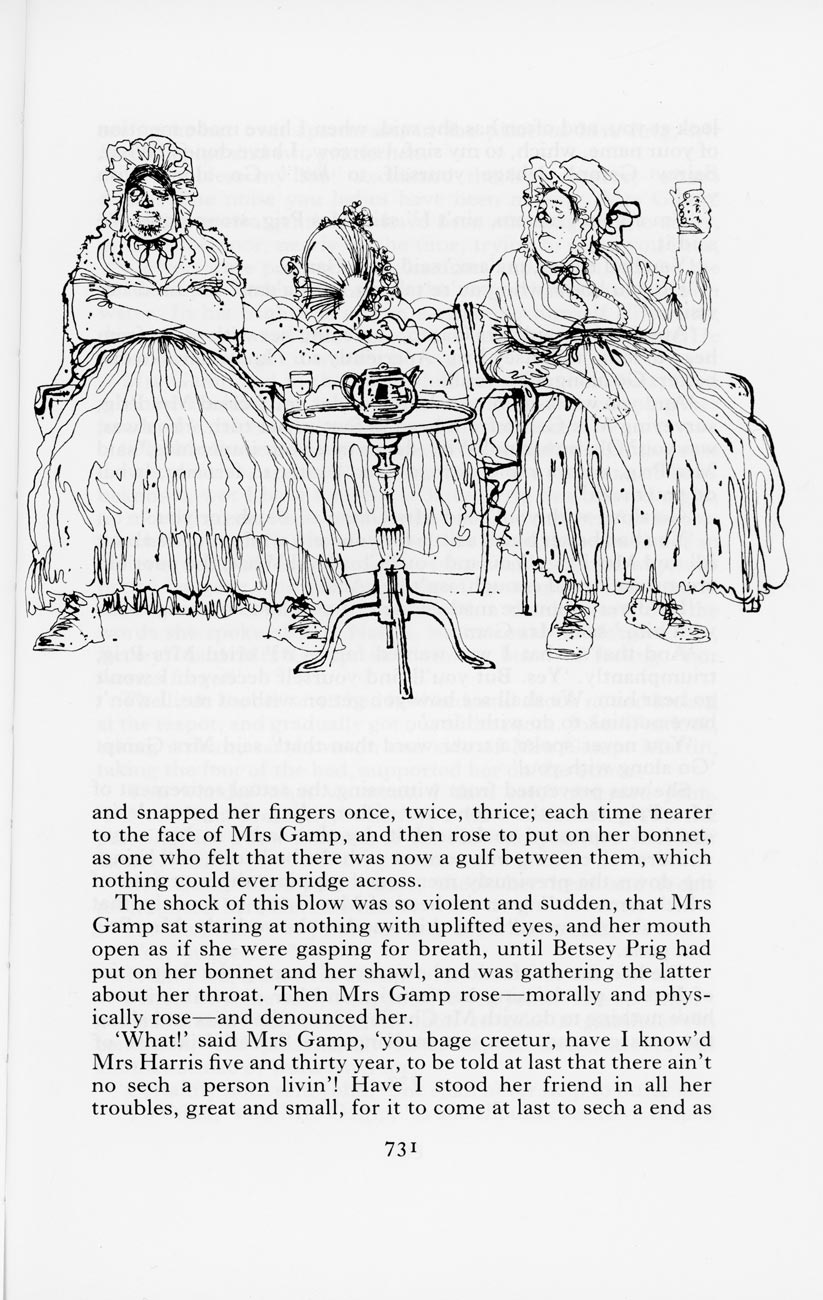I spent much of the day completing my reading of my Folio Society edition of Charles Dickens’s ‘Martin Chuzzlewit’. Much dogged determination and the illustrations of Charles Keeping were required to see me through it.
Christopher Hibbert’s informative introduction was helpful, and indicated that the author was pleased with his work.
The book was written in Dickens’s usual literary style with customary humour and descriptive powers. Somehow or other it failed to engage me, and the first section of almost two hundred pages was frankly boring. Perhaps it was that the characters introduced during this period were unlikeable, even though they were well delineated. Maybe it was the focus on scams and deception at home and abroad that was not to my liking. Although the trip to America and the unwholesome descriptions of the land and its representatives was more engaging, they were not at all flattering. Indeed they must have prompted Dickens, some quarter of a century later, to write a postscript which he insisted should be included with any future publication, as adhered to by The Folio Society, which can only be regarded as an apology, or at least a declaration of a change of heart. It seemed to me that, despite the lively narrative that interval added nothing to the story.
The creation of Mrs Gamp is comic genius, and the schemingly, smarmy, dishonest Mr Pecksniff is memorable, but it was difficult for me to raise much interest in the large number of others who were nevertheless tidily wrapped up in the final few chapters.
‘He sat quite still and silent’
‘Mrs Gamp looked at her with amazement, incredulity, and indignation’
‘A figure came upon the landing, and stopped and gazed at him’ shows Keeping’s mastery of perspective.
‘He sank down in a heap against the wall, and never hoped again from that moment’
‘Mr Tapley stuck him up on the floor, with his back against the opposite wall’
‘ ‘Dear Ruth! Sweet Ruth!’ ‘ – now it can be acknowledged.
‘Miss Pecksniff dashed in so suddenly, that she was placed in an embarrassing position’ displays the artist’s idea of the lady’s mortification. Dickens was not so graphic.
Bishop: “I’m afraid you’ve got a bad egg, Mr Jones”; Curate: “Oh, no, my Lord, I assure you that parts of it are excellent!” “True Humility” by George du Maurier, originally published in Punch, 9 November 1895. A “curate’s egg” describes something that is mostly or partly bad, but partly good. (From Wikipedia).
This evening we dined on more of Jackie’s sausages and mushrooms casserole ; creamy mashed potatoes; crunchy carrots; and tender runner beans, with which she drank Hoegaarden and I drank more of the Malbec.










